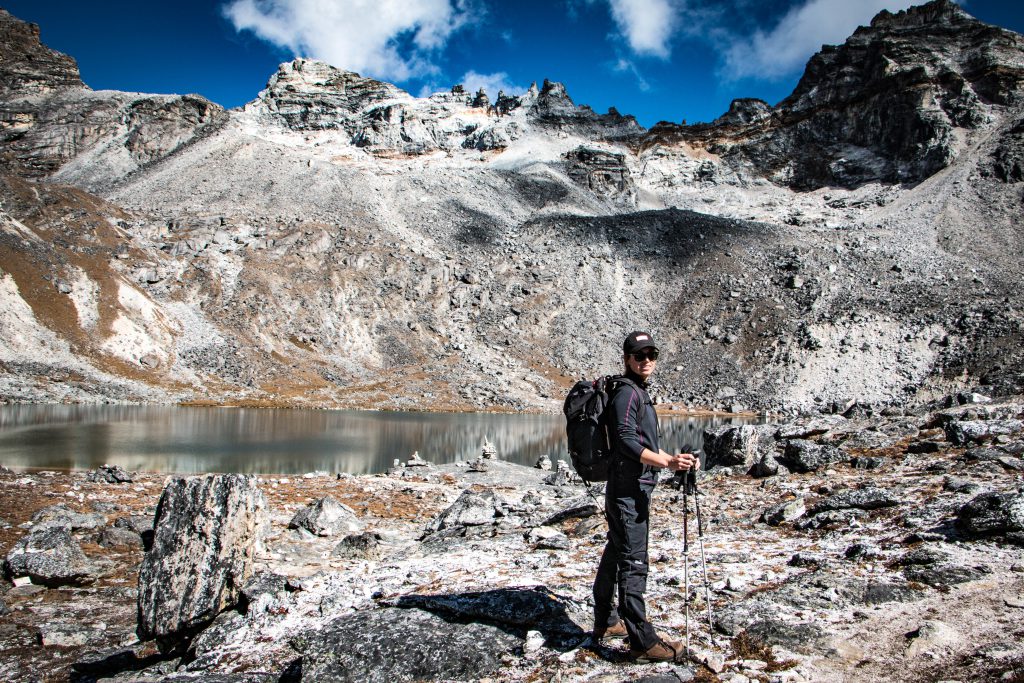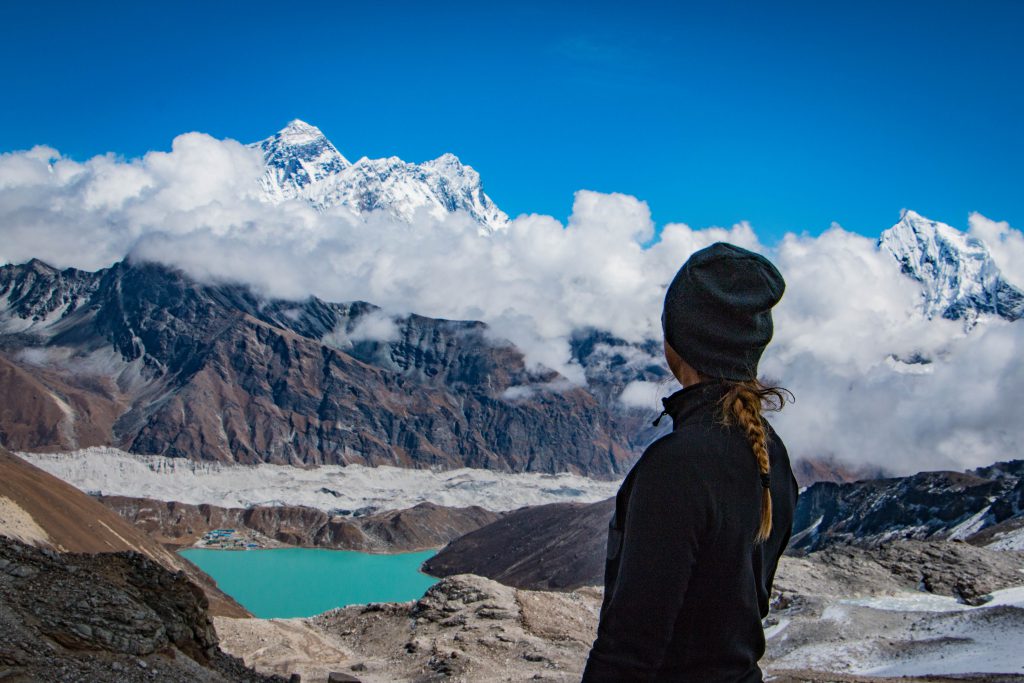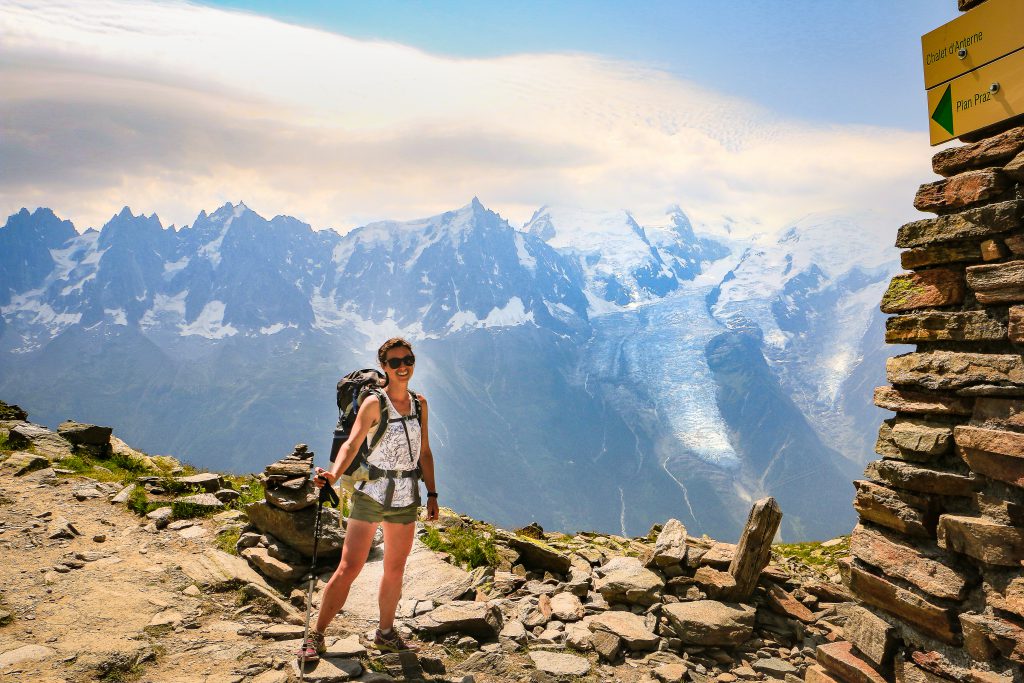5 tips for trekking solo
Our social media manager has some advice for hiking soloists.
Some people think I’m crazy for preferring to trek alone. “Isn’t it dangerous?” they say. “Don’t you get lonely?” Of course there is an extra element of risk. If I fall and hurt myself, it’s up to me to get myself to safety. And yeah, sometimes I miss sharing magic moments with those dearest to me. But there are myriad benefits too. I presume you feel the same, as why would you be reading this?

When I was younger I backpacked around the world. I did a few seasons as a snowboard instructor in the Alps. I lived on the other side of the world for a while. I did all this solo. But that’s not the same as heading into the wilderness with all you need to survive in your bag. There are no hostel get-togethers, no après-ski bars, no friendly antipodean colleagues. It’s just you.
But it’s this freedom that most appeals to me. I can be utterly selfish – that’s a real luxury. I can go faster, slower, stop, take a short-cut or ‘long-cut’ whenever I want to. I don’t have to consult with anyone else. I don’t have to ask for anyone else’s opinion.
I have time to think; it’s basically therapy. I have days upon days to process my thoughts, to actually go through all the recent things that have happened in my life and reflect on them and learn from them.

Then there’s the whole aspect of learning what you’re capable of, what your own strengths and weaknesses are. After each solo trekking experience I’m a little more prepared for the next one. And, come to think of it, a little more prepared for – and appreciative of – reality.
Be realistic with your own limits
My first solo hiking trip was the Tour du Mont Blanc. It was 10 days and – with some re-routing – 190km. That sounds pretty long for a beginner. But bear in mind I’d been trekking for a long time before that, and I’d completed lots of through-hikes with friends. Also, I trained pretty hard to get in shape. Furthermore, I didn’t camp. I stayed in catered mountain huts. If you’ve never through-hiked before, I’d suggest doing some longer, multi-night trips with friends before embarking on anything alone. Likewise, if you’re not used to carrying a massive backpack, go light and stay in huts, B&Bs etc. (You don’t get homemade jam and mountain cheese served on a platter in your tent!)

Safety first
Always tell someone where you’re going and, better still, give them a detailed itinerary of your plans, including where you plan to camp/stay each night. Research where you’ll get mobile phone reception so you can check-in with loved ones. Always have local emergency numbers stored in your phone. What are the risks from animals? Check the weather report as often as possible. Avoid hiking in thunderstorms. Where can you refill your water bottle? Do you need a water filter? What about food? Always take extra in case you get caught out. And a first aid kit is absolutely essential. Oh, even if you’re hiking on a marked trail, always take a map and compass and know how to use them.
Invest in good gear
Getting cold means you’re likely to get sick, which sucks as you’ll have to miss a day – or two – of trekking. But it can also lead to bigger problems. Hypothermia doesn’t only happen when its -30°C. All you need is for your core body temperature to drop a few degrees. The first signs of hyperthermia include disorientation and reluctance to move. If you’re alone this is a real problem. You’ve got no one to motivate you into moving and getting help. Moral of the story: don’t get cold.
Set daily goals
Although you can go faster and slower as you please, you still need to stick to a rough plan. (I did have a Plan A and Plan B though; it’s always good to have a back-up plan.) If you’re hut-to-hut trekking this is taken care of: you have to get to your chosen hut that evening. But if you’re trekking in Sweden, for example, where you can pitch your tent virtually anywhere, it’s easy to just say, “ah well, here’s far enough for today.” If you’re 1-2km from your goal this isn’t a big deal. But if you decide to set camp 10km shy of the day’s goal you’re going to seriously screw up your plan. I always consulted a map and marked on it where I wanted to eat lunch and where I wanted to sleep. I also chose these places for their beauty, too.

Don’t let other people’s fears stop you
You will hear people telling you you’re crazy, particularly if you’re a woman. Advice is great. Reading about the trail or talking to others who’ve done it is wise and prudent. But if you’ve taken all necessary precautions, you’re physically and psychologically ready, then just do it. Ignore the naysayers. Oh, and remember: you’re not really alone. You’re with yourself. The person you know best and you’re only going to become closer after this experience. Enjoy!
